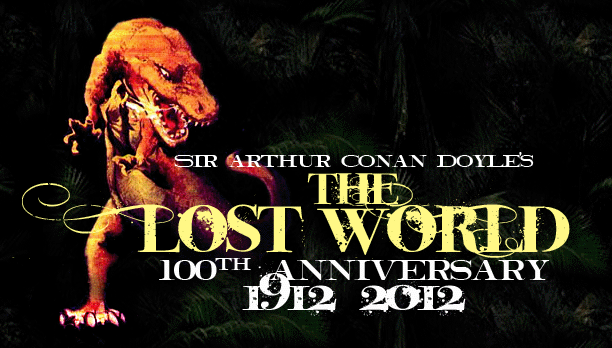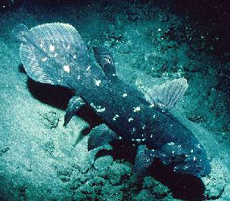

|

|
On the supposition that the summit is really inaccessible, not only to men, but to all unwinged animals, there are those who hold that on this table land, cut off as this must thus be from all communication with the rest of the world, very possibly animal forms of a primitive type exist which have undergone no modification under the influence of new-coming forms since the plain was first isolated in mid-air." Cryptozoology is the scientific study of previous undescribed animal species: animals either entirely unexpected, or ones previously thought extinct. So far, the field has been on the fringe of science along with UFOs, ghost photographs and Atlantis. However, there are efforts to organize cryptozoology into a legitimate science adhering to the Scientific Method. It is this scientific cryptozoology that is, really, of the most interest. The Scientific Method is a self-correcting system by which we can make and test explanations for observed phsyical phenomena. Human beings make observations about the physical universe. They go on to make tentative explanations for these observations ("how did this come to happen?"), called "hypotheses". Other people with the relevant expertice test the explanation, trying to find things wrong with it. If they cannot find anything wrong with the explanation, then the "hypothesis" graduates into a "theory". In scientific parlance, a "just a theory" is an explanation that "just hasn't been disproven". One can speak with confidence about a "theory" until new observations are made. If the "theory" still explains the new evidence quite well, and if the "theory" continues to do so for a long time with every new observation and grows to encompass evidence from many different sources and disciplines, the "theory" may come to be considered a fact. If the "theory" does not explain the new observations very well, a new explanation must be formulated that takes into account the old observations and explanations, and the process repeats itself. What, then, is admissible as evidence? What kind of observations merit explanations? In science, there are 3 main types of observations: tangible, testimonial, and anecdotal. Tangible evidence is a physical specimen you can hold in your hand, poke with a scalpel, stick under a microscope, or look at through a telescope. Tangible evidence would be a dinosaur bone, an animal specimen, or any number of other things which provide real, direct, and accessible evidence of something's existence. Testimonial evidence is second-hand information, such as photographs or reports. This kind of evidence certainly points towards something, but is hardly conclusive (as Challenger discovered with his photographic plates). The rules of zoological nomenclature tend not to allow photographs to stand as "type specimens" of organisms. Anecdotal evidence is, essentially, "eyewitness accounts", which are notoriously unreliable. How unreliable? In 1978, a red panda escaped from a zoo in Rotterdam, Holland. Natives of India, red pandaa are not difficult creatures to distinguish: red fur with black legs, a racoon-like tail and face, and about the size of a medium dog. The zoo hoped that eyewitness accounts could help them locate the delinquent, and so they asked the newspapers for help. But just as the newspapers went to press, the panda was found by railway tracks, quite dead. That wasn't enough to stop over 100 reported sightings of the panda that continued for several days after the newspapers reported that the panda was found and was deceased. No doubt that many of these witnesses were upstanding and sober folks. One of the things which helps guides scientific inquiry, and which is becoming more prevalent amongst scientific cryptozoologists, is Occam's Razor. Devised by William of Occam, this is the principle, also called "parsimony", which states that the explanation which is scientifically the "simplest" should have highest preference. This simplicity is determined by what contraveines the least number of established scientific laws and theories. In other words, anything is possible, but lets start with what we know can actually happen. As an example, lets use water-going monsters like the Loch Ness Monster. The most frequent explanation for these sorts of creatures is a living pleisiosaur: an oceangoing reptile that was contemporaneous with the dinosaurs and is presumed to have gone extinct with them. Is a living pleisiosaur a tenable explanation?
What this means for Nessie is that if she is anything, she cannot be a pleisiosaur. The claim that they are requires that right at the Mesozoic extinction event, pleisiosaurs adopted an entirely new - non-fossil creating - lifestyle, moving from warm coastal waters to cold glacial lakes that would not be formed for another 60 million years. Did they suddenly become warm blooded? This wouldn't be the last of any changes, considering that they would also have to have become long and sinuous, moving by undulation of their bodies, able to crane their necks up 90o, and hold their breath for significantly longer than any known animal... Unless, of course, they could exchange gases with the water, with a higher effectiveness than the most efficient creatures at this: sea snakes. It would also require our ideas about surface area and gasesous exchange to change completely. To survive in a cold environment, the creature would have to be well insulated rather than skinny, which would prohibit gasesous exchange. This is beyond the fact that the more surface area, the harder it is to exchange gases (which is why eggs and bugs can only get so big). So is a living population of pleisiosaurs swimming around the northern latitudes of the United Kingdom (Nessie) and Canada (Ogopogo, Cadborosaurus, Champ) parsimonious? Hardly. Is it possible that these creatures, if they exist, could be pleisiosaurs? Anything is possible, but in this case, only if pleisiosaurs become something completely other than pleisiosaurs, and left no information about this change. The notion of living pleisiosaurs, and the majority of sightings and photographic evidence actually work from an outdated image of what they were like, popular in childrens' books and toys of a bygone age. As long as it can remain within the the Scientific Method and adhere to Occam's Razor, cryptozoology can and is a valuable science. Not much can be considered wrong with a directed search for animals not yet discovered by science... In fact, before the father of modern cryptozoology, Bernard Heuvelmans, named the discipline, this is the very thing that explorers of the 19th and early 20th centuries were doing. A case in point is the Gorilla, which was considered fanciful until it was actually discovered in 1902. Since then, a handful of remarkable discoveries have been made. The afforementioned Coelacanth, which nobody was expecting to find at all. Nobody was running around with Coeacanth sightings until, suddenly, there it was. Now, several populations of Coelacanths have been found around the world. There's also the Okapi, a short-necked giraffe, reported in 1890 but not officially recognized until 1901. Some creatures are expected, and some aren't. The Vu Quang Ox of Vietnam was one of the expected ones: horns, skulls, skins, and the reports of hunters were all that were known of this large terrestrial mammal until 1994 when some were finally caught. Another is the Giant Squid, which had been known from legends of kraken since time immemorial and identified scientifically in the 1850s but still hadn't been photographed in its natural habitat until 2004. Up till then, all that was known of their biology and ecology was gleaned from evidence literally gathered from on and in Sperm Whales, as well as what washed up on shores around the world. Speaking of the ocean, there are still types of fish described in the first deep sea dived that have gone unconfirmed. There's also the Megamouth Shark discovered in the 1970s and the Komodo Dragon in 1926. Cryptozoology is also in the habit of confirming the extinction of animals thought to have been made extinct by humankind. One example is the Tasmanian Tiger, officially declared extinct 60 years ago when the last example known died in an Australian zoo. However, reports persist, complete with scat, prints, and the like. Is this another case of the Netherlands' ex-panda, or did they escape the destructive hand of man? But one thing about these creatures is that, though hidden and unexpected, they don't shatter accepted scientific ideas. A large terrestrial mammal that layed formally undiscovered until 1994 is still only a large terrestrial mammal that layed undiscovered until 1994. When there were still extensive blank spots on the map, it stood to reason that there were many undiscovered creatures. The same stays true today, as very little of the world's great rainforests and oceanic trenches have gone with systematic exploration. Even the Coelacanth, though entirely unexpected, was more an instance of suprise than a scientific paradigm shift. This doesn't mean that there isn't something out there in the hills of Canada, the jungles of Africa, or the lakes of Scotland, but if there is something, the options are limited. A non-pleisiosaurid pleisiosaur in a Scotish glacial lake or a prehistoric ape-man which doesn't match any known fossil ape-man in Canada, where the oldest known instance of hominid immigration are the ancestors of Native Americans, is unlikely in the extreme. It is ridiculous to suggest that such things are unworthy of research though. No discovery is not worthwhile. But it behooves us to approach this from a method we know to be effective, within truths we know to be valid. This is how science progresses and has done us well thus far. It doesn't diminish the romance at all, any more than being able to name the stars or learn how the mountains were made reduces their wonder and majesty. Review by Cory Gross
|